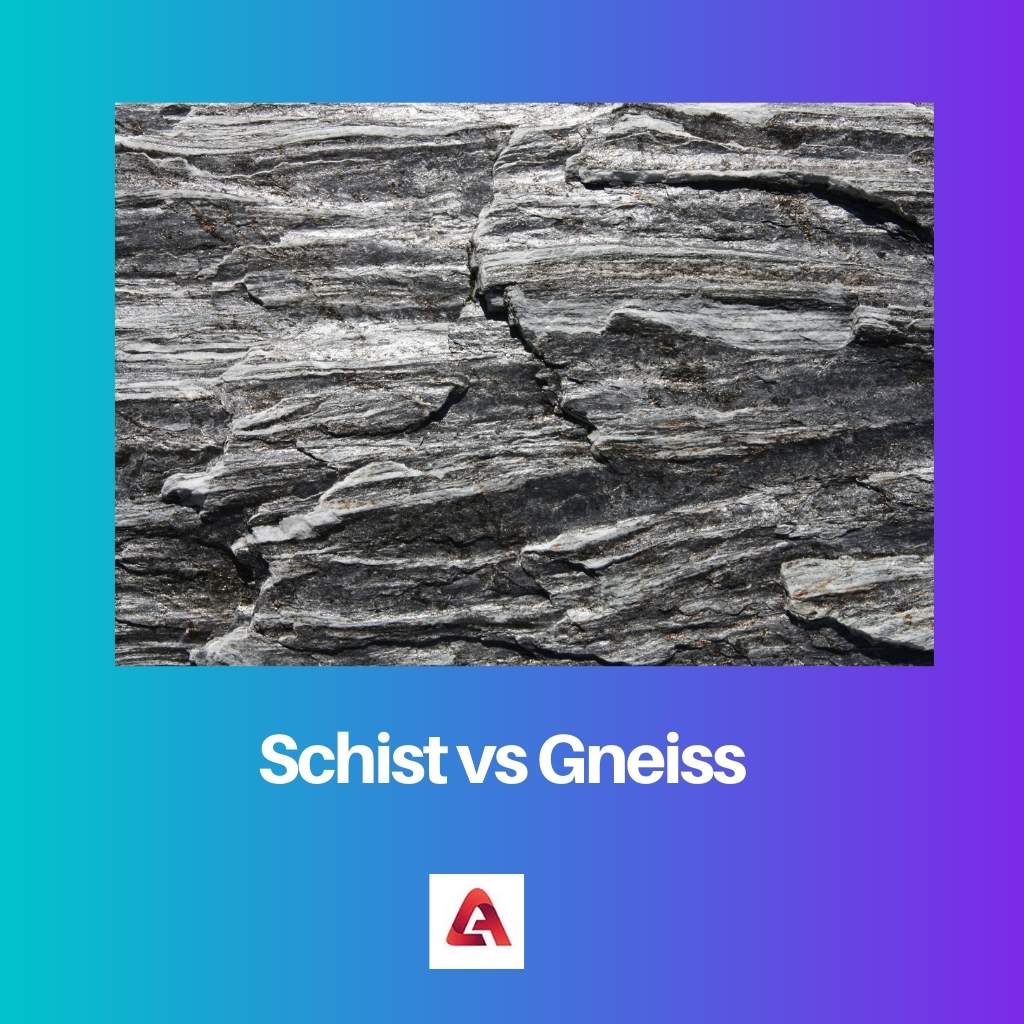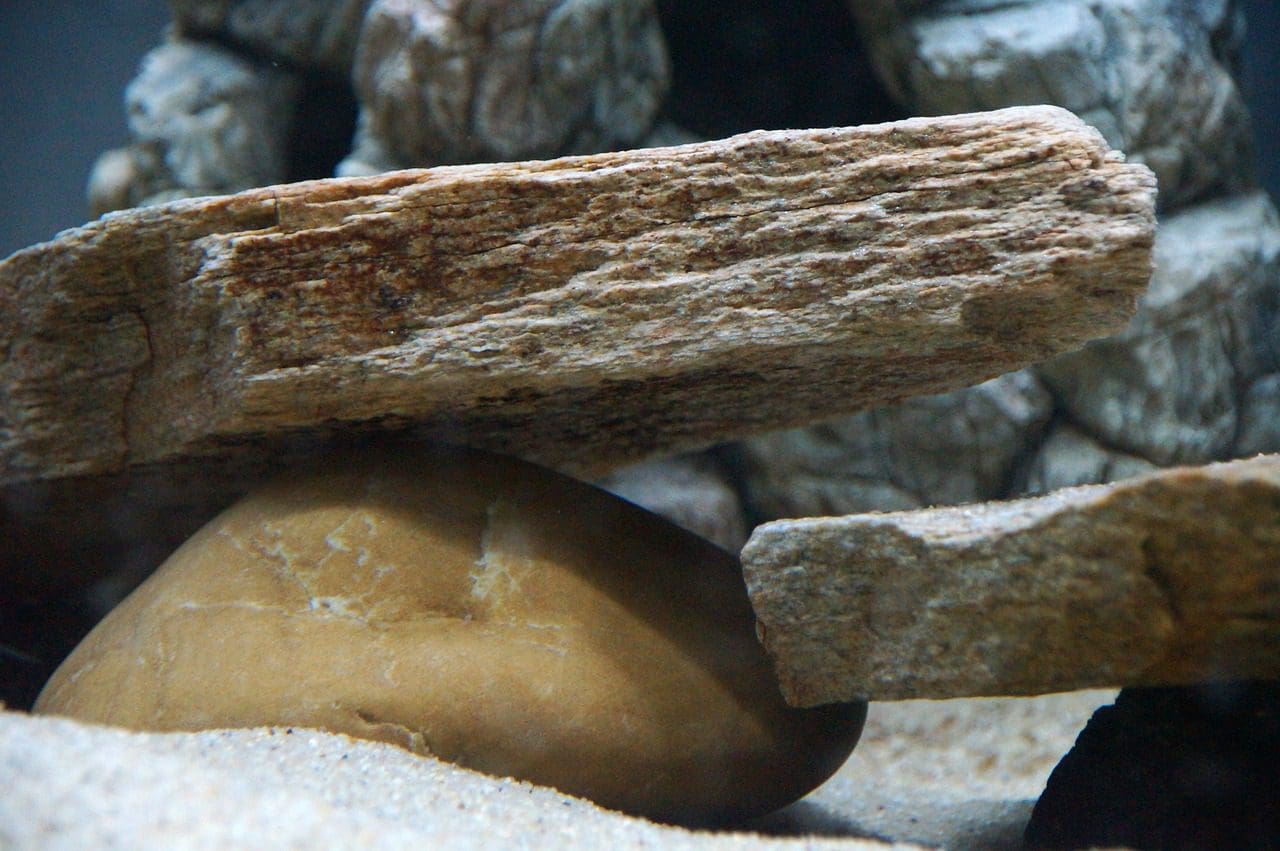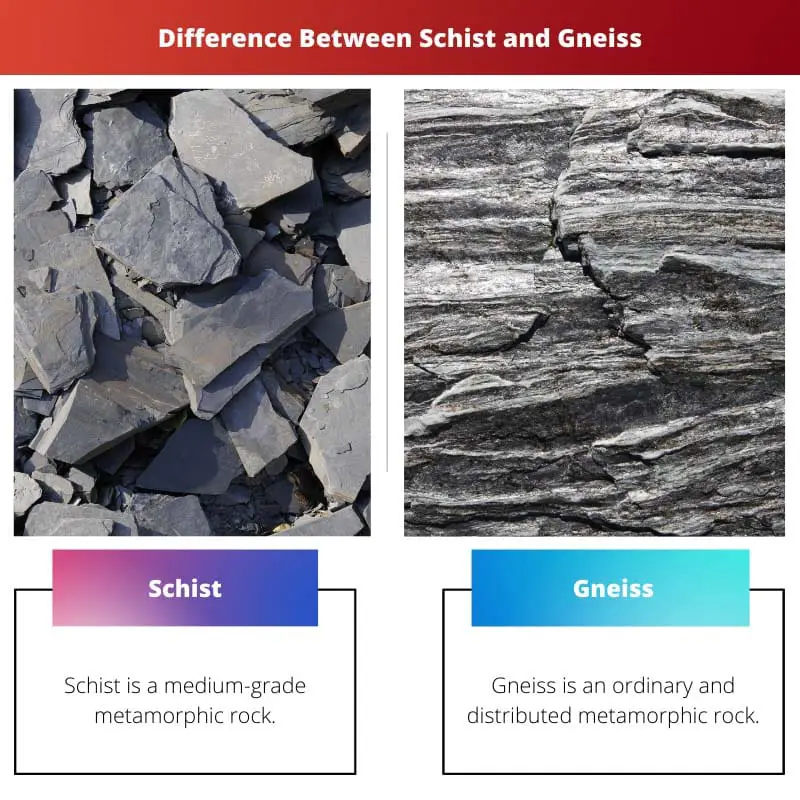Several rocks are practical in our daily life. Rocks contain minerals that help us in life. Rocks can help in developing new technology.
A man can use rocks and minerals for building materials, manufacturing cars, used for roads, and many others—several types of rock help in developing new technology. Schist and Gneiss are two different types of metamorphic rocks with minerals and hardness.
Key Takeaways
- Schist is a metamorphic rock formed from the intense heat and pressure on the original rock. At the same time, Gneiss is a metamorphic rock formed from high-grade regional metamorphism and granite intrusion.
- Schist has a foliated texture, which means it has visible layers, while Gneiss has a banded texture, which means it has alternating bands of light and dark minerals.
- Schist has a higher mica content than Gneiss, and it is less resistant to weathering than Gneiss, making it more suitable for use as a building material.
Schist vs Gneiss
Schist is a type of metamorphic rock. There are multiple layers in the schist rocks. The size of schist rocks can be medium or large. The subtype of schist is mica schist. Gneiss rocks are formed from sedimentary rocks. High pressure and temperature are required in the formation of these rocks. There are two subtypes of gneiss rocks.

Schist is a metamorphic rock sculptured from mudstone or shale. Schist is a medium-grade rock that contains layers. Schist rocks have medium and large-sized, consist of sheet-like grains, and are flat with a preferred orientation.
These rocks had made with a high range of minerals like muscovite, talc, biotite, graphite, chlorite, and sericite. Feldspar and quartz are extremely less generous in the Schist rocks. The Sub-type of Schist rock had Mica Schist.
Gneiss is one of the types of metamorphic rock. Gneiss had formed from igneous and sedimentary rocks. Gneiss forms at high temperatures and high pressures acting on the metamorphic rocks in the process.
Gneiss had derived into two types. Orthogneiss is the type of gneiss rock formed from igneous rocks, and Paragneiss is formed from sedimentary rocks. Feldspar and Quartz had high in these gneiss rocks.
Comparison Table
| Parameters of Comparison | Schist | Gneiss |
|---|---|---|
| Meaning | Schist is a medium-grade metamorphic rock. | Gneiss is an ordinary and distributed metamorphic rock. |
| Formation | Schist had shaped from mudstone or shale. | Gneiss had shaped from sedimentary rocks or igneous rock at high temperature and high pressure. |
| Sub-types | Mica Schist is the sub-type of the Schist metamorphic rock. | Orthogneiss and Paragneiss are the sub-types of Gneiss rock. |
| Hardness | The hardness of the Schist had 4-5 on the Moh’s scale. | The hardness of the Gneiss rock is 7. |
| Minerals | Muscovites, talc, biotite, graphite, chlorite and sericite. Feldspar and quartz are small in amount and are less generous. | Gneiss contains quartz, potassium feldspar and sodium feldspar. Also, a small number of muscovite, biotite and hornblende are present in the Gneiss rocks. |
What is Schist?
Schist is a medium-grade metamorphic rock formed at high temperatures and high pressures. Schist rocks had formed from mudstone or shale rock at high pressure and temperature. The Schist metamorphic rocks are flat and medium in size.
Schist rocks contained sheet-like grains with preferred orientations. The solidity of the Schist rocks is 4-5 as per the Moh’s Scale. Schists can divide easily. Some of the types of igneous rocks can form the Schist rocks.
Mica Schist is a sub-type of Schist rock. Minerals like Muscovites, talc, biotite, graphite, chlorite, and sericite are present in the Schist. Muscovite, talc, biotite, graphite, chlorite, and sericite. 4-5 is the relative solidity indicated by Moh’s scale against other rocks and minerals.
Some names used for Schist rock had three words: granite, graphite and schist rocks. Granitic, Shale, and Volcanic rocks are the parent rocks of Schists. Schists had used it for tarmac, garden decoration, and occasionally for sculptures.
Schist is not a strong rock, but it is sometimes used as a building material.

What is Gneiss?
Gneiss is one of the metamorphic rocks obtained from igneous rock and sedimentary rock at high temperatures and high pressure. Gneiss is an ordinary and widely dispensed rock. It had a foliated structure.
Gneiss had a solidity of up to 7 as per Moh’s scale, and the compressive strength of the Gneiss rock is 125.00 N/mm sq. The Gneiss rock had crushed and powdered. And the colour of the powder is a streak.
Orthogneiss is the sub-type rock formed from igneous whereas Paragneiss had formed from sedimentary rock. Gneiss consists of a small number of minerals like Muscovites, biotite, and hornblende and a high range of potassium feldspar, sodium feldspar, and quartz.
Granitic, Volcanic, and Shales are the parent rocks of Gneiss. Gneiss is used as an ornamental stone for ornaments, flooring, facing stones on buildings, and gravestones. The gneiss rock breaks uniformly in size when hammered.
Gneiss is similar to gabbro and granite and distinguishable from Schist rock and phyllite.

Main Differences Between Schist and Gneiss
- Schist is a metamorphic rock formed from mudstone or shale rock, whereas Gneiss rock had obtained from igneous or sedimentary rocks.
- Schist is a medium-grade metamorphic stone, whereas gneiss rock had ordinary and widely dispensed stone.
- Mica Schist is a sub-type of Schist rock. In Contrast, Orthogneiss and Paragneiss are the sub-types of the Gneiss rock.
- The Small amount of Feldspar and quartz had present in Schist rock. But Potassium feldspar and sodium feldspar had high in Gneiss.
- The relative solidity of the Schist rock is 4-5 on the Moh’s scale. On the other hand, the firmness of the gneiss rock is up to 7 on the Moh’s scale.

- https://www.sciencedirect.com/science/article/pii/S0378778814005040
- https://pubs.er.usgs.gov/publication/pp1220

I find it very interesting how rocks are so useful in our lives, and the dynamics between Schist and Gneiss are truly intriguing.
I had no idea about the specific differences between Schist and Gneiss, thanks for the informative article.
Totally agree! The comparison between Schist and Gneiss is quite enlightening.
I never thought I’d be so intrigued by an article about rocks and minerals, but this was truly captivating.
This article is proof that even seemingly dull topics can be presented in an interesting and thought-provoking way.
Completely agree, it’s impressive how engaging and informative the content turned out to be.
The comparison table is a fantastic way to understand the key differences between Schist and Gneiss.
I think this article does a great job of highlighting the practical uses of rocks in our lives.
Absolutely, I feel much more knowledgeable after reading this.
The detailed explanation of the minerals found in Schist and Gneiss is truly enlightening.
Absolutely, it’s amazing to learn about the properties of these rocks in such detail.
I’ve never thought about rocks in this way before, really thought-provoking content.
I appreciate the detailed breakdown of the comparison between Schist and Gneiss, very informative.
The content was not only educational but also very engaging to read.
I found the explanations of Schist and Gneiss to be quite intriguing as well.
This is really eye-opening, I never would have thought rocks could be so essential in modern technology.
The way they explained the differences between Schist and Gneiss is quite compelling.
I know right? It’s fascinating how much impact these rocks can have on our everyday lives.
I’m amazed by how much I learned about rocks and minerals from this article.
The information presented here is extremely valuable in understanding the practical uses of rocks in various industries.
I completely agree. It’s not that we get such an in-depth look at rocks’ importance.
This has definitely broadened my perspective on the significance of rocks in our lives.
Fascinating how these rocks come together to form such essential elements of technology and construction.
I couldn’t agree more, it’s truly mind-boggling when you think about it.